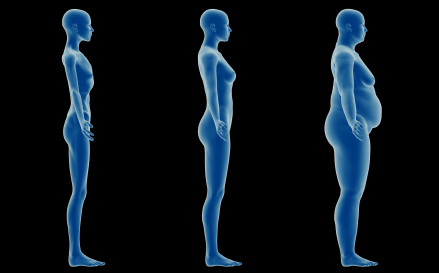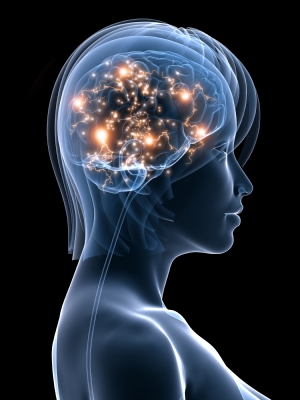Wednesday Bubble: Thin is in – eating disorders in midlife
 Yesterday, my BBFF Amy Zimmerman wrote a shocking piece about a trend among young brides to achieve rapid weight loss via feeding tubes. In it, Amy cites statistics from the The National Association of Anorexia Nervosa and Associated Disorders, Inc. about anorexia and other eating disorders, focusing solely on adolescents and young girls. And while it is indeed true that the majority of eating disorders arise at an early age, there is an entire group that is slipping under the radar: older women.
Yesterday, my BBFF Amy Zimmerman wrote a shocking piece about a trend among young brides to achieve rapid weight loss via feeding tubes. In it, Amy cites statistics from the The National Association of Anorexia Nervosa and Associated Disorders, Inc. about anorexia and other eating disorders, focusing solely on adolescents and young girls. And while it is indeed true that the majority of eating disorders arise at an early age, there is an entire group that is slipping under the radar: older women.
Amy’s post spurred me to do a bit of research and I was not at all pleased by what I learned (and did not learn). In fact, there are a dearth of data on eating disorders in women over the age of 40 and it appears that the problems are underdiagnosed and often unrecognized. Still, experts say that for some of these women, their problem is resurfacing as they age while for others, it is brought on by life events (e.g. death or divorce), menopause (and its related weight gain), empty nest syndrome and even illness. Self-esteem issues, the invisibility syndrome and the mirror all contribute as well.
A February 2012 Harvard Health Publication on the issue quoted Dr. Anne Becker, director of the Eating Disorders Clinical and Research Program at Massachusetts General Hospital as pointing out that society’s values on youth coupled with the incongruence between how women feel and their reflection in the mirror (e.g. “if you think that surface of your skin or contours of your body aren’t supposed to match your chronological age”) is partially to blame. This incongruent belief system can lead to negative body image or a precursor to eating problems where suddenly appearance, food and weight control take center stage. And anecdotal evidence suggests that these issues are starting to emerge in the clinical setting.
If you feel that you are from bulemia (binge and purge), anorexia (severe dietary/caloric restriction) or binge eating disorder (binge without the purge), there is help. Moreover, if you find that you are obsessing unnecessarily and regularly about your body image or weight or appearance, you may be headed down that path. Fortunately, even if the stats are not readily accessible, ample resources ares truly just a click away. The Academy for Eating Disorders features an eating disorder professional finder tool, which allows you to search by location and practice speciality for physical or mental assistance. The National Eating Disorders Association offers in-depth resources, information, support and education to individuals and families. ANDA (National Association of Anorexia Nervosa and Associated Disorders) also provides resources and links.
You may be under the impression that what you are feeling is a result of aging and societal pressure. Or believe that you overcame your issues at an earlier age and are better able to cope now (even though the signs are recognizable). Yet, just as these issues can soar in adolescents and young adult women, they can similarly do so in midlife. Seek assistance; you are worth it.
Read MoreSeaweed and your thyroid
For years, I’ve received requests to write about thyroid disease and menopause. And for years, I’ve swept the topic under the table; that is, until now. However, in light of recent news, I’d like to approach it in a slightly different way. I hope that the following is helpful.
Symptoms of menopause and an underactive thyroid (inability to produce enough thyroid hormone to run the metabolism) can be very similar. In fact, hypothyroidism is 10 times more common in women than in men, and experts say that as many as 10% of all women have some sort of thyroid deficiency. Additionally, risk increases exponentially as we age. Moreover, symptoms like fatigue, depression, weight gain and sexual dysfunction can all be signs of an underactive thyroid and not menopause. More troubling are data from the American Association of Clinical Endocrinologists demonstrating that only one in four women who discussed menopausal symptoms with their practitioners were also tested for thyroid disease.
But what about thyroid cancer? Is there a link to hypothyroidism? And what’s the latest news in that area?
Thyroid cancer is currently one of the fastest growing cancers in the world, and is 2.9 times more likely to occur in women than in men. In fact, last year, doctors from Dana Farber Cancer Institute in Boston reported that for every four patients they were seeing with thyroid cancer, three were women.
Researchers have hypothesized (but have not concluded) that the interaction of the environment, reproductive and menstrual factors account for the disparity in cancer rates between women and men. And just last week, Japanese researchers reported that study findings show that postmenopausal women who consume seawood daily have 3.8 times greater risk for thyroid cancer compared to women who ate it 2 days a week or less. The reason for this may be due to the level of iodine in the seaweed, which has been shown to impair thyroid function and has been specifically linked to the most common type of thyroid cancer — papillary carcinoma.
Importantly, in most cases, thyroid cancer has no early signs or symptoms, and as the cancer grows, it may be diagnosed by a painless lump on the neck, hoarseness, swollen lymph nodes or difficulty swallowing. But take note: while hypothyroidism may increase the risk for heart disease, it has not been linked to a higher risk of thyroid cancer.
It’s all very confusing but the main take-away points are that if you are experiencing menopausal symptoms, be sure that your practitioner tests your thyroid to rule out any sort of thyroid condition. Moreover, if you notice a nodule in your neck, contact a health professional to rule out cancer. Most importantly, 95% of thyroid masses are benign. But you may want to keep iodine intake moderate just to be safe.
Read More
Got Stress?
Did you know that April is Stress Awareness Month? All I can say is that maybe some of us need an entire year! That’s why I as devoting today to stress busting posts with tips aimed at ameliorating some of that stress out of your life, and in turn, ameliorating some of the more unpleasant parts of the transition. And while I can’t make any guarantees, I can confirm that learning to relax and let go can pave the way to wellbeing.
A few highlights from the Flashfree archives await!
From December, 2011: Mindfulness, meditation and stress. Learning to bring on the relaxation response can go a long way towards health and happiness.
From November, 2011: Yoga, insomnia and sleep quality. Don’t know about you but when I don’t sleep well, I react in ways that are not always beneficial. Apparently, yoga not only promotes better sleep patterns, but also, helps to boost stress resistance.
From March, 2011: Try a little mindfulness. It appears that by breaking down the components of one’s experience, you may be better equipped to handle a variety of situations. And although this particular information applies to hot flashes, the reality is that it is likely useful in all aspect of life.
From July, 2009: Why I bake. Sometimes simply incorporating pleasurable activities into our lives can help alleviate daily stressors. One of the web’s top social researchers says that baking is her path towards relaxation.
From September, 2009: The best medicine. Want to feel better? Laugh…to the point of tears.
From August, 2008: L’Chaim. Women gravitate towards ‘tending and befriending.’ No wonder; social support can go a long way towards alleviating stress.
What tricks of the relaxation trade work best for you? Care to share them?
Read MoreWednesday Bubble: This is your brain. This is your brain on phytoestrogens.
Do phytoestrogens improve cognitive performance?
This is the first I’ve heard that phytoestrogens, i.e. isoflavones, lignans (a major form of phytoestrogens found in flaxseed and sesame seeds) and coumestans (a type of phytoestrogen found in split peas, pinto beans and lima beans) may help boost attention, executive function and memory. Yet, similar to other alternative strategies, the studies examining these benefits have yielded mixed results. Moreover, a lot of these studies have been based on short-term and not long-term use of phytoestrogens, have failed to determine how these compounds may influence brain function, and have not looked specifically at women undergoing the menopausal transition, at least until now.
This time, researchers took a cohort of women actively involved in the Study of Women’s Health Across the Nation. All 1,677 women who saw the study through to its end were between the ages of 42 and 52, premenopausal, early or late perimenopausal, and naturally or surgically postmenopausal, and were not using hormones. Importantly, this group of women included several ethnic groups, which allowed the researchers to see if phytoestrogens behaved differently depending on ethnicity; they included white, African American, Hispanic, Chinese and Japanese.
- Diet was regularly evaluated and included interviews, open ended questions and specifically, daily intake of four types of isoflavones, four types of lignans and coumesterol, which is the main phytoestrogen in coumestans. In Asian women, soybeans, tofus and soy milk were the main sources of isoflavones while in non-Asian women, soy mik, tofu and meat substitutes (e.g. seitan) were the main sources. Regardless of ethnic group, coffee and tea were the primary sources of lignans, and bean sprouts, the main source of coumestans.
- Cognitive testing was done in the morning and always in the same language for bilingual women. These tests included processing speed, immediate and delayed recall and working memory.
- The study took place over 6 years and women were visited 10 times.
So, what did they learn?
First, phytoestrogens appear to affect cognitive function differently, depending on the type and stage of menopause. For example, Asian women whose diets had high levels of isoflavones tended to process information quicker but only during early perimenopause and postmenopause. Conversely, during the same time, these women had poor recall. Non-Asian women who ate a lot of isoflavones also had poor recall during perimenopause. Moreover, women who ate the most lignans, regardless of ethic group, appeared to have better memories but only during late perimenopause. Overall, coumestans did not appear to influence brain function whatsoever.
It’s all sort of confusing, isn’t it? What’s more, even the researchers admit that the effects, when seen, were quite small. And the distinctions between Asian and non-Asian women? It’s the chicken/egg paradigm: is it dose or DNA? At the end of the day, it’s all bubble burstable because scientists remain unclear as to how phytoestrogens affect the way we process information. It is possible that its due to their antioxidant characteristics, but who knows?
Meanwhile? Despite potential GI tract issues (e.g. gas, bloating, constipation), incorporating higher levels of phytoestrogens into your diet may be a good thing. Your brain on phytoestrogens? Who doesn’t need a little boost?
Read MoreSoy…revisited
 It’s been a rough ride for soy, with studies often at odds regarding its effectiveness in ameliorating or preventing hot flashes. Some reviews have shown that soy isoflavones, in particular S-equol and genistein can alleviate hot flashes while others fail to finding anything conclusive. Still, the original observation that Japanese women appear to suffer less frequently from hot flashes and have a high consumption of soy isoflavones has led researchers to keep trying to tease out the benefits of soy.
It’s been a rough ride for soy, with studies often at odds regarding its effectiveness in ameliorating or preventing hot flashes. Some reviews have shown that soy isoflavones, in particular S-equol and genistein can alleviate hot flashes while others fail to finding anything conclusive. Still, the original observation that Japanese women appear to suffer less frequently from hot flashes and have a high consumption of soy isoflavones has led researchers to keep trying to tease out the benefits of soy.
I am glad that they have. In fact, in a study published online in Menopause just a few weeks ago, researchers reported that an extensive review of 19 scientifically sound trials has shown that soy isoflavones are significantly more effective than placebo in reducing both the frequency and severity of hot flashes.
Here’s what you need to know:
- 19 trials were included for analysis and a variety soy isoflavone supplements in different doses ranging from 30 mg to 135 mg daily were studied. Some of these were natural formulations and others, chemically synthesized to match key ingredients believed to have a health effect.
- Hot flash severity and frequency were examined in women that were either premenopausal, perimenopausal or menopausal (i.e. postmenopausal) although definitions used to define this group differed between studies.
- The number of women in these studies totalled over 1,200.
The results showed that taking 30 to 80 mg soy isoflavones daily for 6 months to a year significantly reduced the frequency of hot flashes by roughly 17%. Moreover, the 10 trials analyzed for hot flash severity showed a significant reduction by as much as 30%. In both cases, these figures increased depending on how the researchers teased out and analyzed the data.
The researchers say that even though there is a common perception that results from soy trials have been mixed, there has been a “consistent and clear pattern in favor of isoflavones over placebo” when properly plotted on a graph. Moreover? The scientifically designed studies that were included in their analysis helped to insure that all populations, including women with breast cancer, were included. Additionally, they analyzed studies that were as short as 6 weeks in duration, namely to determine if women with cancer not receiving treatment would respond the same as healthy women. Additionally, there is some indication that the effectiveness of soy actually increases over time with continuous use.
What about the type of soy isoflavone? This review actually shows that genestein is more effective than daidzein for alleviating hot flashes.
The key take away is that for women who don’t want to use hormone replacement or are ineligible to do so, there is a scientifically proven effective alternative: soy. And while soy may disturb the GI tract in some women, it is actually quite safe, even among women with breast cancer.
So far, so good. The next step is to determine which factors matter most to gain benefit, e.g. dose, formulation, hot flash frequency and how long a woman needs to remain on treatment.
Read More








